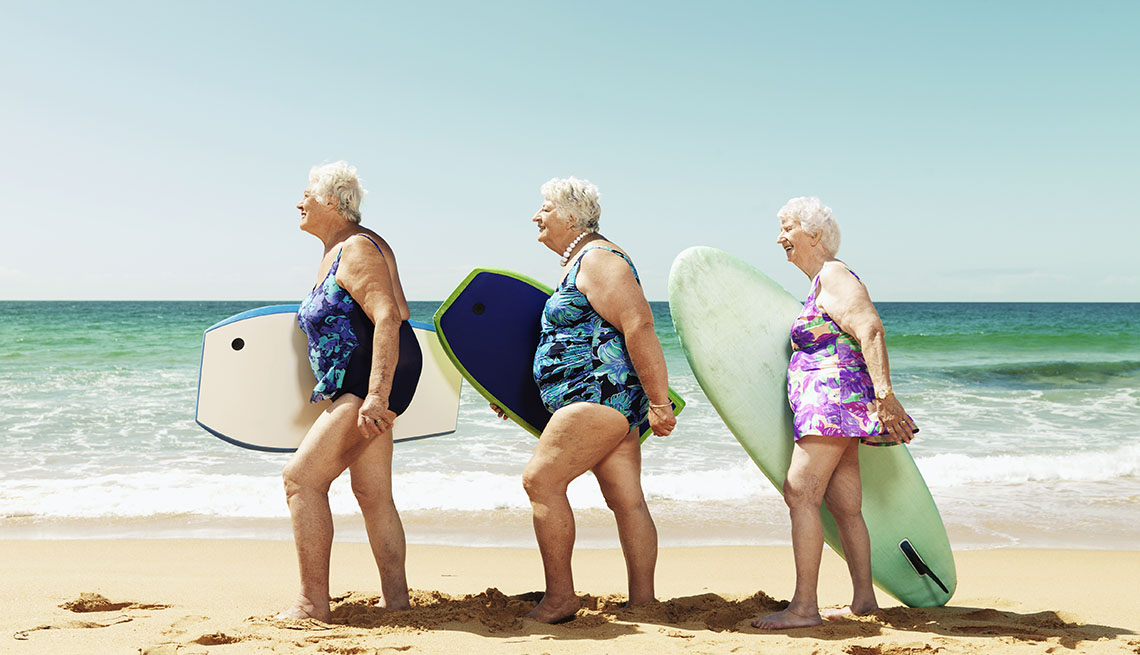Staying Fit
What five words first come to mind when you think about someone who’s old?
Yale researcher Becca Levy says that most Americans who answer that question include at least a few words that have a negative connotation, like senile, grumpy and weak.
The problem, Levy says, is that believing those ageist stereotypes can be a self-fulfilling prophecy.


AARP Membership— $12 for your first year when you sign up for Automatic Renewal
Get instant access to members-only products and hundreds of discounts, a free second membership, and a subscription to AARP the Magazine.
In a new book, Breaking the Age Code: How Your Beliefs About Aging Determine How Long & Well You Live, Levy lays out a deep body of research demonstrating that many health problems formerly considered to be entirely due to aging are instead strongly influenced by negative age beliefs.
Studies reveal that people with negative beliefs about aging are more likely to experience cardiovascular events like heart attacks and strokes, chronic stress, walking and balance issues, memory problems and psychiatric illnesses such as depression and anxiety.
Attitudes about aging even affect life span. In one pivotal study, published in the Journal of Personality and Social Psychology, Levy and her coauthors found that median survival was seven and a half years longer for those who had more positive beliefs about aging than for those who had less positive beliefs.
The researchers discovered that having positive age beliefs boosted survival even more than widely accepted longevity factors, such as low cholesterol, low blood pressure, low body mass index and avoiding smoking.
Ageism in our society
Many of our assumptions about age are formed when we’re children, through, say, fairy tales about wicked witches and negative portrayals of older adults in popular culture, Levy says. She compares ageism in the United States to an evil octopus with far-reaching tentacles that affects everything from employment opportunities to who gets access to quality health care. In the recent AARP “Mirror Mirror” survey of more than 6,000 women, about 30 percent of participants age 50 and older said they are regularly discriminated against because of their age.
Even the fact that we call a memory lapse a senior moment reinforces stereotypes about cognitive decline that aren’t accurate, Levy points out.
A professor of psychology and epidemiology at Yale University, Levy contrasts the American view of aging with that in Japan, which has the world’s second longest average life expectancy. There, older people are integrated into the culture and aging is celebrated, she observes.
“They have a national holiday that celebrates older people, and they treat centenarians like rock stars on television and on reality shows,” Levy says. “In the comic books that are popular there, older heroes are featured.”
Reverse your negative beliefs about aging
Fortunately, individual attitudes about aging aren’t set in stone. You can shape and correct your beliefs at any age, Levy says, and it can make a difference. In multiple studies, she has shown that people who are exposed to positive descriptions of aging improve their memory, walking speed, balance and overall health.
Many are already on the right track. A new “Second Half of Life Study” by AARP and National Geographic found that not only do older adults make up the happiest age group, but that 2 out of 3 of those 80 and older said they are living their best possible life or close to it.
“The important piece of research is that these age beliefs are powerful, but they are malleable,” Levy says. “We can change them.”
Ready to start shifting your beliefs? Her book has a comprehensive guide on how to do that, but you can start with these steps.



































































